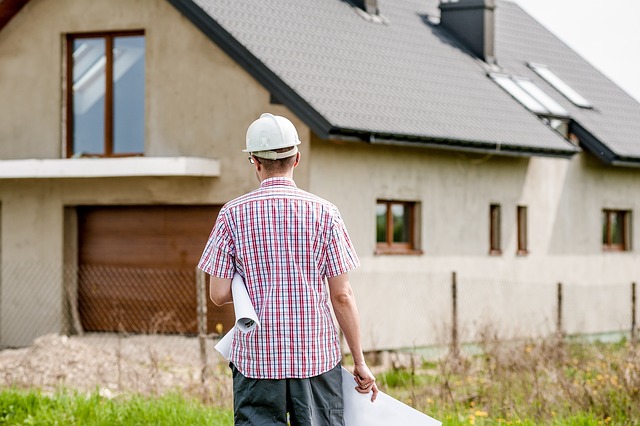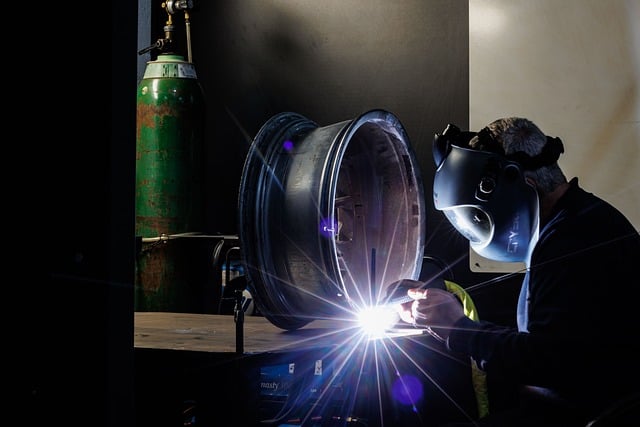Homeowners seeking to enhance their living space’s comfort, energy efficiency, and aesthetics may consider window replacement as a key upgrade in home repair and maintenance. This article delves into the critical aspects of window selection, installation, and long-term care, focusing on strategies that contribute to a home’s overall performance and longevity. We’ll explore how updating windows not only revitalizes your home’s appearance but also potentially reduces energy costs and improves insulation. From evaluating the need for replacement to implementing energy-efficient installation techniques, and maintaining them over time, this guide is tailored for those looking to make informed decisions in home repair and maintenance.
- Assessing the Need for Window Replacement in Home Repair and Maintenance
- Step-by-Step Guide to Energy-Efficient Window Installation in Home Repair and Maintenance
- Post-Installation Care and Long-Term Maintenance Strategies for Windows in Home Repair and Maintenance
Assessing the Need for Window Replacement in Home Repair and Maintenance

When considering home repair and maintenance, the condition of windows plays a pivotal role in energy efficiency, comfort, and aesthetics. Homeowners should regularly assess their windows for signs of wear, such as drafts, condensation between panes, difficulty in operation, or faded frames that might indicate the need for window replacement. Identifying these issues early can prevent more extensive damage and ensure a comfortable living environment. For instance, windows that allow drafts are not only uncomfortable but also lead to increased energy costs as heat escapes during winter and enters during summer. Similarly, modern, energy-efficient windows can significantly reduce heating and cooling bills by providing better insulation. In the context of home repair and maintenance, it’s not just about replacing old windows with new ones; it’s about selecting the appropriate window type that complements the home’s design while meeting the occupants’ needs. This includes considering window materials, glazing options, and features like double or triple panes, which can enhance both the home’s performance and its curb appeal. Regular inspections and proactive maintenance can extend the lifespan of windows and prevent the premature need for replacement. However, when the time comes, understanding the benefits of new window technology and the impact on home energy consumption is crucial for informed decision-making in home repair and maintenance planning.
Step-by-Step Guide to Energy-Efficient Window Installation in Home Repair and Maintenance

When considering a window replacement as part of your home repair and maintenance efforts, prioritizing energy efficiency is key to enhancing comfort while reducing your energy bills. To achieve this, it’s important to follow a systematic approach during installation. Begin by carefully measuring the existing window openings to select the correct size for your new, energy-efficient windows. This ensures a proper fit and optimal performance. Next, remove the old windows with care to avoid damage to the surrounding frame or structure. Once the old windows are out, inspect the opening for any signs of rot or damage that could impact the effectiveness of the new installation.
Proceed by installing flashing materials around the window perimeter to prevent water infiltration and ensure a weather-tight seal. Then, follow the manufacturer’s instructions for the specific model of your energy-efficient windows. This typically involves applying a bead of sealant around the frame where it meets the wall, inserting the window into the opening, and securing it with fasteners at appropriate intervals. After the window is in place, apply additional sealant as needed to close any gaps and ensure a tight fit. Finally, install the trim or siding material over the exterior edge of the window frame for a clean and finished look. Throughout this process, pay close attention to detail, as proper sealing and installation are crucial for maintaining the energy efficiency of your new windows. Regular maintenance checks will help you identify and address any issues promptly, ensuring that your home remains comfortable and energy-efficient all year round.
Post-Installation Care and Long-Term Maintenance Strategies for Windows in Home Repair and Maintenance

After the installation of new windows in your home, ensuring their longevity and optimal performance hinges on consistent post-installation care. This includes regular cleaning to remove accumulated dust, dirt, and pollen, which can otherwise impede window operation and reduce energy efficiency. Homeowners should gently clean both the interior and exterior glass surfaces with a soft cloth or non-abrasive sponge and a mild detergent solution. This upkeep not only preserves clarity but also supports the performance of any coatings like low-emissivity (low-E) films that enhance window insulation properties.
In addition to regular cleaning, long-term maintenance strategies involve periodic checks for proper operation, sealing, and overall condition. It’s advisable to inspect weather stripping and caulking annually to maintain their sealing effectiveness, preventing drafts or water infiltration. The balance of the window is also crucial; adjustments may be necessary as windows can shift over time. Home Repair and Maintenance best practices dictate that any adjustments should be made by a professional to avoid damaging the window or its frame. Additionally, lubricating moving parts like locks, hinges, and sliding mechanisms with a silicone-based spray once a year can ensure smooth operation and extend the life of these components. By adhering to these maintenance practices, homeowners can maximize the lifespan of their windows and maintain the comfort, energy efficiency, and aesthetic appeal of their homes.
